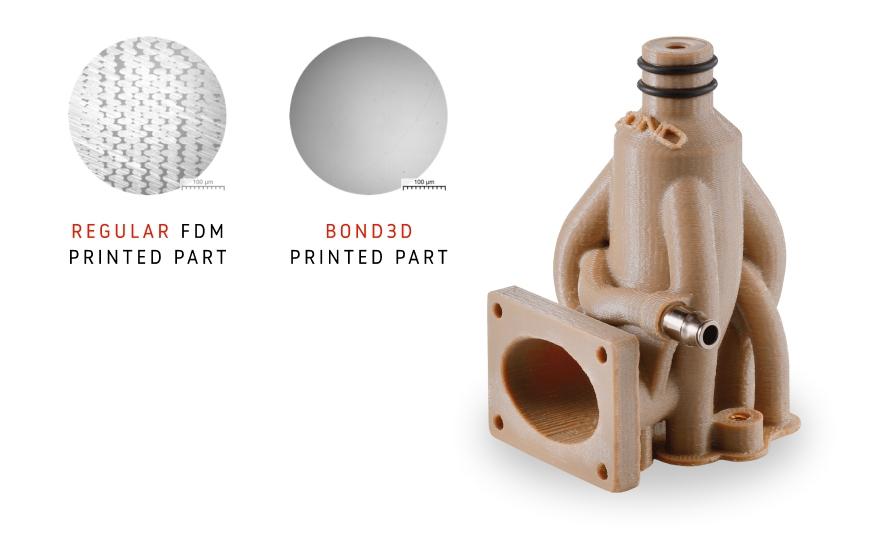- FMA
- The Fabricator
- FABTECH
- Canadian Metalworking
Our Publications
Categories
- Additive Manufacturing
- Aluminum Welding
- Arc Welding
- Assembly and Joining
- Automation and Robotics
- Bending and Forming
- Consumables
- Cutting and Weld Prep
- Electric Vehicles
- En Español
- Finishing
- Hydroforming
- Laser Cutting
- Laser Welding
- Machining
- Manufacturing Software
- Materials Handling
- Metals/Materials
- Oxyfuel Cutting
- Plasma Cutting
- Power Tools
- Punching and Other Holemaking
- Roll Forming
- Safety
- Sawing
- Shearing
- Shop Management
- Testing and Measuring
- Tube and Pipe Fabrication
- Tube and Pipe Production
- Waterjet Cutting
Industry Directory
Webcasts
Podcasts
FAB 40
Advertise
Subscribe
Account Login
Search
Bond3D promotes its voidless additive manufacturing process for PEEK parts
- December 1, 2021
- Product Release
- Additive Manufacturing

Pressure-controlled “bondability” technology yields higher-density parts than conventional FDM printing, says Bond3D.
The Dutch company Bond3D reports that its additive manufacturing system eliminates most of the voids found in PEEK parts produced by FDM (fused deposition modeling)-style AM technologies.
Compared to parts made from bulk PEEK materials, FDM-produced products have a product density of approximately 85% and dramatically less strength in the Z-direction (vertical). The key element of Bond3D’s system, which includes hardware, software, and slicing technology, is pressure-controlled, voidless printing. It reportedly yields highly isotropic parts having a density exceeding 99%.
The conventional FDM process works by controlling flow of the molten material to be printed, explains Bond3D. But because of the natural variability of process conditions, this can lead to over- or under-extrusion, meaning too much or too little material is printed. Overextrusion can necessitate scrapping the part, so additive manufacturers generally prefer the safety margin created by underextrusion. This, however, results in voids and compromises product strength.
Bond3D’s solution—called “bondability”—is pressure-controlled printing, where flowing molten material fills the gaps between previously printed lines. Material flow continues until the pressure in the melt pool below the print nozzle starts to exceed the setpoint, indicating that no more material can be added. When the gap has been filled, adjoining lines have bonded completely.
The company’s printer incorporates three printheads, allowing multimaterial or multiresolution printing; a heated print bed and build chamber for optimal process conditioning; and a build volume of 400 by 400 by 400 cu. mm.
- Podcasting
- Podcast:
- The Fabricator Podcast
- Published:
- 04/16/2024
- Running Time:
- 63:29
In this episode of The Fabricator Podcast, Caleb Chamberlain, co-founder and CEO of OSH Cut, discusses his company’s...
- Trending Articles
- Industry Events
16th Annual Safety Conference
- April 30 - May 1, 2024
- Elgin,
Pipe and Tube Conference
- May 21 - 22, 2024
- Omaha, NE
World-Class Roll Forming Workshop
- June 5 - 6, 2024
- Louisville, KY
Advanced Laser Application Workshop
- June 25 - 27, 2024
- Novi, MI

























